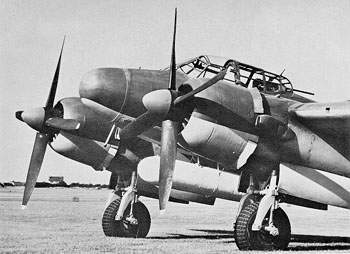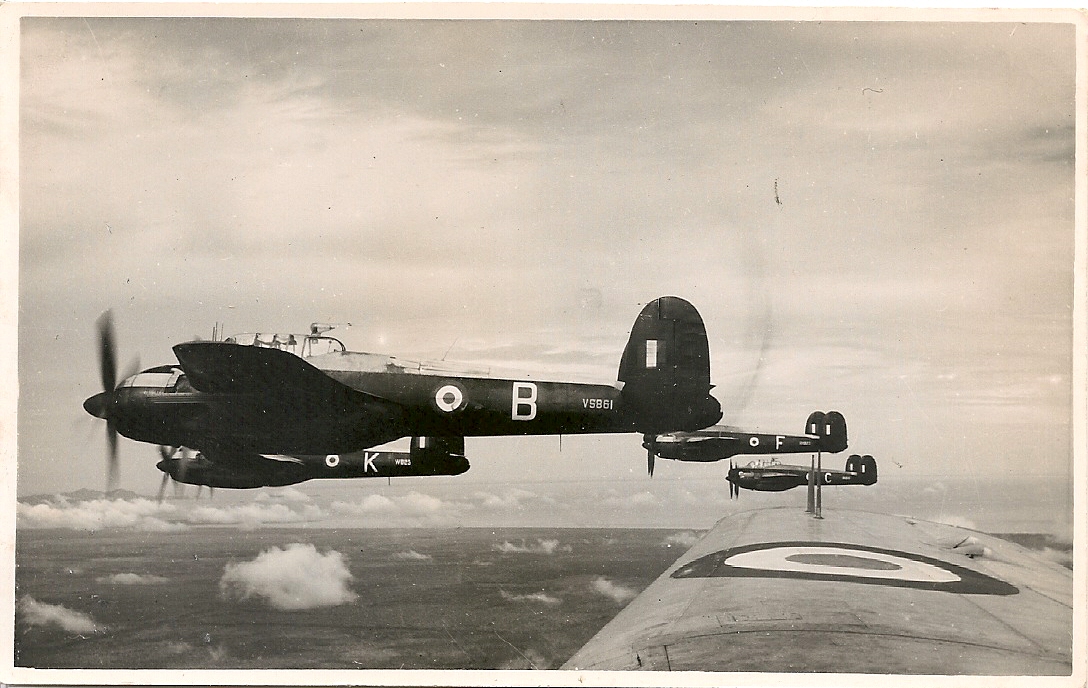Thug life: The Bristol Brigand in 11 questions & answers

Bristol’s thuggish Brigand was a tough torpedo bomber tracing its lineage back to the Blenheim. We spoke to author Alex Crawford to find out more about this fascinating machine.
So, what was the Brigand made to do?
“Initially the aircraft was designed as a replacement for the Beaufort torpedo bomber. By late 1941 the Beaufort was no match for the German convoy defences and the ever increasing numbers of ‘flak’ ships. Considering the time it takes to develop new aircraft the Air Ministry looked at other possibilities and in the end the Beaufighter was modified to take a torpedo. This was only to be a stop gap until the new aircraft was developed and put into production.”
Only 148 aircraft made, why so few?

“The design process started in February 1942 and by the time the first aircraft came off the production line WWII was over. The aircraft were to have replaced the Beaufighter torpedo bombers of the Coastal Command Strike Wings but these were all cut back after WWII to just two Squadrons. With the advent of missiles the idea of a Coastal Command Strike Wing was abandoned and the Squadrons were disbanded. With no need for a torpedo bomber the fate of the Brigand hung in the balance and the contract was cut back.”
Did it see combat? Was it effective?

“Yes, the Brigand B.1 saw combat operations in the Middle East and Far East. 8 Squadron carried out a few operational strikes against dissident Arabs in the Mid-East, while 45 and 84 Squadrons flew over 3,500 strike sorties during the Malayan Emergency from April 1950 until February 1953 when the aircraft were withdrawn from service.
The B.1 could carry 3,000lb of bombs and 8 rocket projectiles and had a range of 1,850 miles. This gave it the ability to cover the whole of Malaya and it could also loiter over targets if the weather was poor and wait for it to clear. As a bomber it was very effective. The aircraft would carry out pin-point dive bombing attacks and then follow this up with rocket strikes and strafing runs with its 4 x 20mm cannon.”
What was best and worst about the aircraft?
“I suppose the best feature of the Brigand was its range and payload.
The worst feature? Well there were several. Throughout its service life the Brigand was plagued with hydraulic issues. Hydraulic pump failures were a constant problem. If the pump failed then the undercarriage couldn’t be raised or lowered. There was a lever next to the pilot so he could hand pump the undercarriage up or down. There was also a back-up that would blow pressure through the system to operate the undercarriage. If all these failed then the end result was a wheels up landing. One Squadron had 18 hydraulic pump changes in one month alone.
Poor quality rubber seals were also an issue. These would degrade and break up and get into the hydraulic system causing the undercarriage jack to seize. Again this would cause undercarriage failure and the possibility of a wheels up landing.
With the cannon being mounted far back from the nose the blast tubes were longer than normal. With poor fume extraction, gases from the fired rounds would build up and on occasion these caused the High Explosive rounds to explode. With control and oil feed lines running close to the canon bay these could be damaged. In fact a few aircraft were lost to this cause. For a while the aircraft were banned from using the cannon until modifications to the blast tubes could be implemented.

Structural issues were also a problem. The Brigand was designed as a torpedo bomber. Dive bombing put a great strain on the airframe causing the skin to ripple and crack. Limits were put on the number of ‘G’ the aircraft could carry out. Propeller blades failed and broke away causing an imbalance in the engine, which would then be torn loose from its mounting. A number of aircraft were lost to this. Towards the end of 1952 cracks appeared in the spars and after two aircraft were lost after losing a wing when recovering from a dive, the B.1 fleet was grounded and withdrawn from service.”

What did pilots think of it?
“I haven’t read much about the pilots experience but from what I understand the aircraft was quite pleasant to fly with good handling qualities, although it had to be ‘flown’ all the time and could be very tiring, especially after a 2-3 hour sortie. 8 Squadron were quite famous for their tight four aircraft formation flying with the starboard engine feathered. From the ground it looked quite graceful but from the cockpit the navigators stated that the pilots had a trying time keeping the aircraft together and were physically exhausted after the flight. Pilots, and crew for that matter, had a great respect for the aircraft and treated every flight with some caution, as anything could and sometimes did go wrong during the flight.”
How did it compare to the Sea Hornet, are they comparable?
“You can’t really compare the two aircraft. The Sea Hornet was a naval fighter while the Brigand was initially a torpedo bomber then a dive bomber. The Sea Hornet was over 100mph faster than the Brigand and it could outmanoeuvre the bomber with ease.
The Sea Hornet could and did carry up to 2,000lb of bombs under the wings or 8 rockets. The RAF Hornet was used to good effect over Malaya and eventually replaced the Brigand with 45 Squadron.”
Was it fast for its time?
“The Brigand B.1s top speed was 358mph with a cruising speed of 292mph. Although it wasn’t as fast as the Mosquito it had roughly the same range although its bomb load was 1,000lb less. There was no aerial opposition for it to contend with during operations in the Middle East and Far East so a high speed was not a major factor. It could carry a large payload a long way and that was important.”
The Hush-Kit Book of Warplanes features the finest cuts from this site along with exclusive new articles, explosive photography and gorgeous bespoke illustrations. Order The Hush-Kit Book of Warplanes here. Thank you.
Our controversial merchandise shop is here and our Twitter account here @Hush_Kit. Sign up for our newsletter here.
Was it well-armed?
“The B.1 could carry 2 x 1,000lb bombs on centreline racks with 1 x 500lb bomb under each wing giving a maximum bomb load of 3,000lb. At the same time it could also carry 4 rocket projectiles under each wing out board of the bombs. Later, trials were conducted with double tier rocket rails and for a while it would carry 16 rockets, although at that time the bomb load had been reduced to 4 x 500lb bombs due to stress on the airframe around the centreline bomb racks.”
Was it related to the Beaufighter?
“The Brigand can trace its lineage right back to the Blenheim. The Beaufort was a variant of the Blenheim and used a large number of the same components. The Beaufighter was a fighter version of the Beaufort and likewise used a number of the same components. The initial design for a replacement Beaufort was to use the Beaufort fuselage and mate it to the Beaufighter wings, engines and tail. This was soon abandoned.
Another design used the wings and tail from the Beaufighter with a new fuselage and engines. The tail planes were mounted slightly higher up on the tail and this was initially called the Buccaneer. With insufficient power from the engines this design was also abandoned.
Eventually Bristol settled on using the wings and tail from the Buckingham with a new fuselage housing a crew of three in a single cabin. This slimline fuselage did bear some resemblance to the Beaufighter fuselage but there the similarities stopped. The new aircraft sported a twin tail larger wingspan, more powerful engines and was much larger than the Beaufighter.”
What should I have asked you?
“Why choose to write about the Brigand?”
“I was surprised that there had not been any major book written about the Brigand. There are a couple of bookazines by Warpaint and Phil Listemann plus several articles but nothing substantial. The Brigand is a fascinating aircraft. Yes it was plagued with problems from the offset but it was used when no other aircraft was available to the RAF during the Malayan Emergency. It had the range and payload capability. There had to be more to it than just being a dodgy aircraft to fly. It was actually very capably of doing the job it was not really designed to do, that of a dive bomber. Ground crews worked tremendously hard to keep them in the air. Spare parts were always an issue. There were never enough, especially hydraulic pumps and parts. They were constantly being modified to overcome the various snags that cropped up. The two Squadrons in Malaya flew over 3,500 operational sorties and lost between them 13 aircraft from all causes with 19 fatalities. Each Squadron had a total strength of eight Brigands and the average serviceability rate per Squadron was normally 4-5 aircraft per day. As well as the operational flying the Squadron had to maintain their monthly flying programme with training flights and as well as bombing practise. There is much more to the Brigand than just being a flawed aircraft. The book is being published by Mushroom Model Publications and I hope it will be out towards the 4th quarter of next year. It will deal with the design and development and operational service of the Buckingham, Brigand and Buckmaster. The Buckingham was originally planned as a bomber version of the Beaufighter and it was given the name Beaumont. Changes in design and specification resulted in a much different looking aircraft called the Buckingham. By the time it rolled off the production lines in 1944 it had already been superseded by other better aircraft such as the Mosquito and it never saw service. Most went into storage and then scrapped. The Buckmaster was a two seat trainer version of the Buckingham that was used to train Brigand pilots. It served that role admirably until the Brigands were withdrawn from service and it was no longer required. The title will be; The Bristol Buckingham, Brigand and Buckmaster.”
Describe the brigand in 3 words
“Graceful, Deadly and Dangerous.”
Hush-Kit spoke to Alex Crawford author of several books on military aircraft including a forthcoming title on the Bristol Brigand


As a bit of a footnote, one or two were converted to target towing duties at RAF Seleter, flying up to the late 50’s in that role..
I’ve never heard of that before. Can you elaborate some more on this role? I was led to believe that when the last of the Brigands was withdrawn from service in early 1953 they were scrapped on site at Seletar.
Brigands were used June ‘52 – Mar 58 on 238 OCU, RAF North Luffenham .Airborne Interception School.